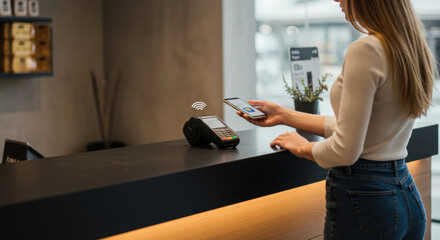Stair railings are critical safety features, but they also add a unique touch to any home design. Choose a style that matches your aesthetic and consult a professional for the best results.

Stainless steel railings with glass, bar, cable or metal plate infills offer a modern look. They’re a popular choice for balconies, decks and outdoor spaces where maintaining views is important.
When it comes to strength, steel stair railings are a top choice for both exterior and interior spaces. These railings offer safety and support while making a statement as a design element. They can also help to create a sense of space and light in areas with fewer windows. They are especially popular for modern and industrial designs, as well as for outdoor spaces like balconies and decks.
Stair railings are important safety features, particularly in high-traffic areas. They can help prevent accidents, and they provide stability for people who need assistance. For these reasons, they must be strong and durable enough to withstand frequent use. They must be capable of supporting people of all sizes, as well as the equipment they may be carrying.
Stainless steel offers exceptional strength for these applications. It is non-porous and does not absorb moisture or dirt, which makes it a great material for high-traffic areas. Additionally, it is easy to clean and sanitize. This combination of durability and ease of maintenance makes it a top choice for commercial buildings, condominiums, and apartments.
Another option for stair railings is aluminum. While it does not have as much strength as steel, it still holds up well under heavy loads. However, it does not resist corrosion as effectively as steel. This is especially important for areas that are exposed to salt or other chemicals.
Both types of metal stair railings are available in several styles, and each has its own benefits and disadvantages. For example, cable railings are a popular choice for contemporary and modern spaces. They are ideal for outdoor spaces because they do not obstruct views, and they are a great choice for staircases in open-plan homes or public buildings. However, they can be difficult to install and are not suitable for traditional or ornate design styles.
On the other hand, wrought iron railings have a timeless style that appeals to many homeowners. These railings can add a touch of elegance to any home, and they are often used in high-traffic areas. They can be made to look more classic or ornate depending on the style of the home, and they can also be painted or powder-coated in a variety of colors.
Durability
Steel stair railings are more durable than their aluminum counterparts and can hold up to heavy foot traffic. They also have a smooth, low-maintenance finish that resists corrosion and can be easily cleaned. This makes them a smart choice for areas prone to moisture or salt. They’re also a great option for homes with children or elderly members because they help prevent accidents from falling down stairs.
Homeowners are increasingly choosing steel elements to complement their living spaces. Steel stairways are popular options for modern open floor plans and lofts, as well as balconies, pool decks, and grill areas. They’re also a great complement to other metal elements in the home, such as metal lighting fixtures and appliances. When paired with wooden handrails, steel stairs can add an elegant look to the living space and make it more inviting.
Stainless steel railings are a great choice for basement stairways that often lead to kids’ play rooms or lounge areas. The stainless steel design is sturdy and durable enough to support the weight of adults, children, and equipment. Stainless steel is also water-resistant, which means that it will not rust. The material is also easy to clean, which makes it ideal for a handrail that comes into constant contact with hands and skin oils.
Another benefit of stainless steel stair railings is their resistance to fire. They’re naturally non-combustible, which makes them a good option for commercial or industrial spaces where safety and fire prevention are critical. In addition, these stairways can be treated with coatings that enhance slip resistance and increase safety.
Wooden stair railings add a traditional touch to any home, and they’re available in many different styles. However, they do have some drawbacks, including their higher maintenance requirements and increased cost. Stair railings made of wood must be re-stained and re-sealed on a regular basis to prevent deterioration, which can cause them to lose their appearance and functionality.
If you’re looking for a durable, stylish, and functional solution to your staircase and balcony needs, consider a steel stairway and railing system from Msusallc. They’re designed to be aesthetically appealing and meet the demands of various lifestyles.
Aesthetics
Stair railings represent the critical intersection of safety, building code requirements, and architectural enhancement. With a multitude of material options and design styles, you can transform your staircase into a stunning focal point that elevates the entire living space.
Metal railings offer a clean, contemporary aesthetic that pairs well with modern design elements and open floor plans. The durable material can also complement a variety of other metal features in your home, including kitchen appliances, grills, and balconies. If you opt for custom engraving, you can further customize your railing system to reflect the unique style of your home.
Steel stair railings are also available in a wide array of colors and finishes. A powder-coated finish is popular, as it offers a smooth surface that resists stains and corrosion. Stainless steel railings are non-porous and can be cleaned easily, making them ideal for high-traffic areas. This type of stair railing is also an excellent choice for outdoor spaces.
Wooden stair railings are classic choices that add warmth and character to any living space. They can be stained or painted, making them versatile enough to fit into traditional, rustic, and even modern designs. However, they may not be an appropriate option for homes with a tight budget as the material can be expensive.
A cable railing system combines innovation with functionality, using thin metal cables to create horizontal barriers that integrate seamlessly into your stairs. These systems require careful tensioning and periodic maintenance, but they can be an elegant accent to your staircase that emphasizes linear and angular lines.
When choosing a stair railing, consider the style of your home and how it will evolve over time. A timeless design in a quality material will enhance your property value and provide years of beauty and utility. Conversely, a trendy option may quickly date your home and detract from its overall resale value.
Stair railings are a major investment, so it’s important to choose a style that suits your lifestyle and matches your home’s architectural design. Experts can help you select the perfect railing for your home and guide you through installation. Professional consultation can be particularly helpful for projects involving structural modifications, curved stairs, or specialized materials.
Maintenance
In residential settings, steel staircases have been a popular choice for many homeowners. They are available in a wide variety of styles and can be used for both exterior and interior applications. These stairs and railings are durable, stylish, and offer excellent safety features. However, they require regular inspection and maintenance to keep them looking their best and functioning properly.
Stairways and railings are crucial elements of any home or commercial building, providing safe access to different levels and keeping visitors secure while they move around the structure. But they can easily become damaged or worn down due to exposure to the elements, making it important to regularly inspect them for wear and damage.
Whether they are made of wood, metal, or other materials, stairs and railings must be cleaned and maintained to ensure that they are free of tripping hazards and that they stay in good condition for as long as possible. Wood stairs and railings can be prone to rot, warping, and insect infestation, while metal ones can rust or corrode if they are not properly cared for.
Cleaning metal stairs and railings can be done with a pressure washer to remove dirt, debris, and stains. It is also important to apply a rust-resistant coating to protect them from corrosion, and to keep the area dry to avoid water absorption. If the coating is no longer protecting the metal, it may need to be resealed.
If you notice any signs of deterioration, it is important to address them immediately to prevent injuries and other problems. Loose or wobbly steps can cause tripping accidents, and they should be fixed as soon as possible. You should also check the railings for loose screws, bolts, or brackets and tighten them if necessary.
There are many ways to customize a steel staircase, including adding unique features like balusters and handrails with decorative designs. You can also incorporate bespoke simplistic designs and even choose a custom engraving to make your staircase truly one-of-a-kind. Incorporating these details into your staircase will allow you to add a personal touch and increase the aesthetic appeal of your home.




